|
|
Review of GSM-handset Haier M600 (Black Pearl)
Sales package:
- Handset
- Battery
- Charger
- Wired headset
- Data cable
- User Guide
The Chinese company going by the name of Haier didn’t get off to a flying start on the Russian market outright, as the company seemingly planned on entering the local market with cheap poorly packed solutions. What the company was really missing? A deep insight into the reality of the market, implying that conquering a particular region with such low-end proposals, whose design could barely make a bid for sympathy, is incredibly hard, especially for a newcomer. The first Haier-branded handsets were mediocre, to say the least, whereas their retail price wasn’t much lower than that of more fetching solutions by other makers. Another defeat came along with the company’s very own Haier N60, this time on the smartphones market – first up, this smart handset was running on Linux OS, which made many consider other options on their shortlists. Second, on the release we got a solution that could hardly match its own prototype spec-wise, as over the lengthy development time the fairly admirable specifications that had been claimed on the N60’s announcement had been altered numerous times, so eventually it turned to be not as good as everyone expected it to be. On top of that the price was way too high – 460 USD for a unit, while the functionality left much to be desired. Frankly speaking, the manufacturer did his best at presenting the solution as a feature-packed handset rather than a smartphone, but it didn’t bring along any benefits. Although, the truth is, the N60 had been popular for some time with Linux-fans, but all that hype eventually run low due to the manufacturer concealing the source codes, which left no chances for the enthusiasts to boost the N60 with self-made applications in view of missing extra software written by the maker or third-party companies.
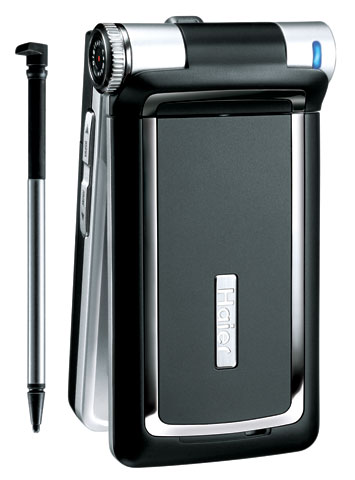
So, what should the company be thankful to for surviving on the Russian market? The answer is as simple as it could only be – the pen-like model P7 alone has saved the day for Haier. Overall, only owing to this solution sporting the very unique looks the company has managed to draw a pinch of attention. It’s remarkable that at Svyazexpocomm 2006 Haier exhibited an updated version of the P7 coming in a slightly modified casing and with more features onboard, which went by the name of P8. However for reasons yet unknown, it hasn’t arrived in the market, and in return a music phone known as the M600 or the Black Pearl stepped into the market, being remarkable for its original design, just like the P7 back then.

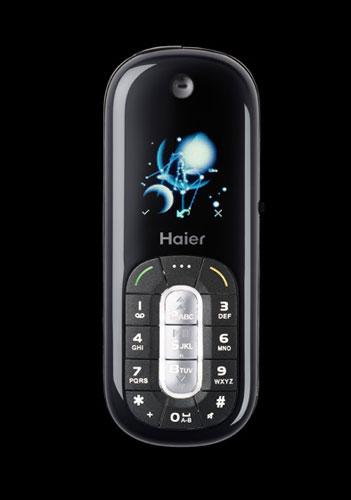
The Haier M600’s design is a result of an alliance between the American and Chinese divisions of the company – and to their credit, the M600 does have something to show off in terms of its looks, being somewhere in the middle of the line that has Handsets and MP3-players on its ends respectively. But not only does it retain familiar curves and shapes of both extremes, it carries some distinctive features of both gadget types onboard as well. The phone utilizes candy-bar form-factor with the bottom and top ends rounded off. The keypad is made in a way to grab one’s eyes instantly and tell you that after all it’s nothing more but a handset, while the dedicated music keys, highlighting the M600’s prowess in the music department, double as standard numeric buttons (2, 5, 8). As for extra details found on the M600’s casing, they do their best at keeping “low profile”. The entire casing is made of glass-like glossy plastic, which surely gets soiled in no time. But having such appealing finishing applied, the M600 looks much better – and pardon me – many consumers, like magpies, go for the “shiny-and-sparkling thingies”. And who really benefit from that are the phone makers – why would they need to exhaust their staff for getting their next offering look and feel marvelous? Just finish it in glass-like plastic and place prominent framings – that is about it, you have got a consumer in your pocket, as he or she won’t pass by such phone and forget about it in a second or two, on the contrary it will grab his/her attention and keep popping up in mind even if the handset itself doesn’t fit them. Undoubtedly, the market has seen numerous exceptions to this trend, when the glass-finished surface allowed a top-notch design to show off its curves and edges in a convenient fashion. Frankly, this holds true for the M600 as well, as such coating makes it look so much more luxurious. Even after a short period of usage, when it has already had plenty and the once shiny surface is soiled, the M600 still manages to seem eye-candy. As the handset’s name implies (Black Pearl) the only trim available throughout the phone’s lifespan will be black. We have no gripes with the M600’s build quality or the plastic used – everything lives up to our expectations. But the truth is, the glossy coating is a magnet to scratches, however they won’t pose a real threat to the handset’s smooth looks, as one can see them only at certain angles.

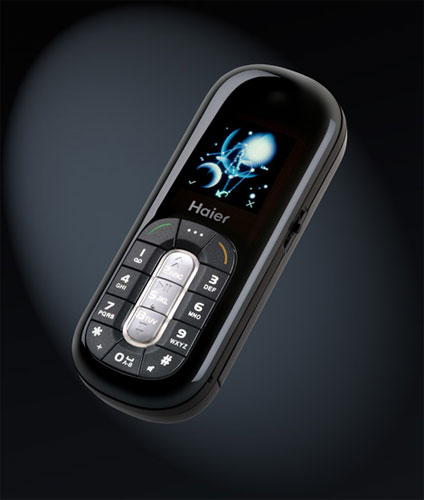
Measuring 90.6x35.3x18.2 mm, the M600 is a mix of an MP3-player and a mobile phone, however its weight has a bent for the former class of devices, as it makes up a mere 64 g. But in spite of its very compact size, I wouldn’t dare to say the M600 “sinks” in a man’s hand – on the contrary, it is very easy to manage. Naturally, sporting such tiny dimensions this handset fits small women’s hands best, and bluntly speaking, women constitute the main part of the Black Pearl’s target audience. Nevertheless one peek is worth a hundred of words, so better take a look at how small the M600 turns out to be compared to Sony Ericsson K750i (which is not a “monster” itself, in the first place).


It would seems that such a portable beauty should appeal to nearly any woman, but in the case with the M600 it went neither way, meaning that some loved it instantly and ensured us that they would definitely go for it, whereas other women we asked told us that it was too compact and it would readily “disappear” in any fancy-bag, even the smallest one. However the opinion that the handset looks truly attractive was shared by both groups.
The left side of the Black Pearl is completely bald, while the opposite side houses there-way scroll wheel standing for menu navigation and other actions (like going through playlists or messages) in standby mode, while in talk mode it doubles as volume control button. One might rightfully ask why the wheel is located on the right, since people used to handling their cell phones with the right hand will find it inconvenient to operate the M600 in this way, and on top of that those familiar with other wheel-powered handsets (most of which feature it on the left) won’t be very happy with such layout either. However if you are out of both groups, then you will seamlessly get along with the new control type, as it makes playing around with the handset a lot easier.

The bottom end of the handset sports no controls or sockets either – in fact, the top rim houses them all, specifically a flap-covered miniUSB slot and a standard 3.5 mm audio jack for plugging in a headset/earphones. Generally speaking these two sockets make your life that much simpler – the 3.5 mm jack allows for using any custom headphones, while the miniUSB slot simplifies synchronization with PC.

The headset coming in one box with handset is average quality-wise, but even with this unit plugged in you can clearly hear that the M600 puts up pretty good performance in the music department, and the better earphones you use, the better the sound gets, so that this handset can even match a cheap MP3-player in terms of sound quality.
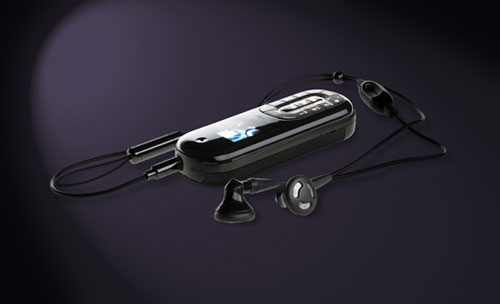
The top end also features the holes for a carrying strap, but to make some use of it you will need to detach the battery cover first.

The front panel plays host to a tiny OLED-powered display offering a resolution of 96x96 pixels (20x20 mm) and capable of 65 K colors. All in all for a handset positioned this way, it’s quite good, but what really disappointed us, was the shield-glass’s mirror coating, making information almost impossible to read in the sun. Furthermore, being a finger-print magnet, the display won’t present you with a crisp and easy-to-read picture if it is soiled.

The numeric keypad, made of plastic, is arranged in two blocks – the keys in the middle double as dedicated player buttons, while the rest of the keypad rings this set of keys. Basing on my experience of handling the M600 I can say that all the keys, despite being set close to each other and boasting bulky shape, are easy to work with, but due to measuring slightly below average, people with big hands will have to go through some difficulties while texting with the M600. The navigation pad is in fact embedded in the outer ring of buttons, yet it offers nothing but pick/hang up keys and one function key.


All keys are evenly lit in light beige, with the dedicated music buttons being edged with a special glowing line, which appears to be pretty good-looking.

Almost the entire rear plate of the M600 is taken up by the battery cover, showing off firm fastening and exposing no gap. Removing the cover reveals a 730 mAh Li-Ion battery. As the manufacturer claims, it keeps the handset up and running for 200 hours in standby mode and provides up to 3 hours of talk time, while in MP3-only mode the M600 shall last up to 11 hours. In conditions of Moscow networks the phone worked for about 2 days at 10-15 minutes of calls a day, up to 3 hours of music playback and 1 hour of listening to the radio. The numbers, put up by the M600 are by no means impressive, so if you are into music, get ready to recharge your device every day. It takes the handset about 2.5 hours to charge from empty to full. The good thing about the Black Pearl, though, is that it can be charged via USB on connection to a PC.

Under the battery you will find SIM-card slot and microSD memory cards socket, which are arranged in a way that the SIM card tops the memory card – strange, isn’t it? Since most users will swap memory cards much more often than SIM-cards.

Menu
Almost all means of the handset management have something to do with the scroll wheel. To get to the main menu you should lean it downwards, while to access your Messages you need to move it up, pressing the wheel brings about the phonebook. The main menu is laid out in a way that allows only for one huge animated icon with a caption to appear on the screen at a time. The sub-menus are arranged in vertical list. On the whole the menu is quite speedy – you won’t notice any evident slow-downs or freezes.
 
As regards the fonts found on the M600, they are not the best thing this handset bring to the table – people with weak eyes will have a hard time playing around with the phone, and regrettably there is no way the fonts can be scaled. The localization job is done well, no abbreviations or something like that is found on the phone, and in case the caption doesn’t match the display length-wise it gets scrolled through.
The phone supports predicative T9 text input system for both Russian and English languages.
In standby mode pressing hang up button activates the key lock, while the pick up key servers for accessing the Call record, pushing the only available function key calls up the user-manageable Shortcut menu, which can accommodate only 4 items, though.

The M600 carries about 64 Mb of dynamic memory onboard, which can be expanded with microSD memory cards, topping out at 1 Gb today. On PC connection, both the internal and external storages are recognized as removable disk that doesn’t require you to install any special drives. Though the data connection speed with its USB 1.1 protocol won’t be very impressive.
Phonebook. The M600’s menu layout might confuse you a little, as it doesn’t house such items as phonebook, call record, messages and service – but worry not, all of them are found in “Communication” folder, basically it isn’t much of a hassle, since they can be easily accessed from the standby screen.
The phonebook embedded in the handset accommodates up to 500 contacts with up to 3 manageable phone numbers per entry (Cellular, home, work or fax) that can be added to one of the groups.
 
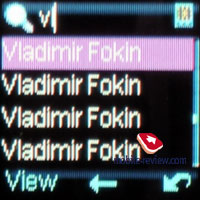 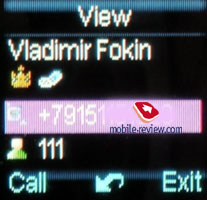
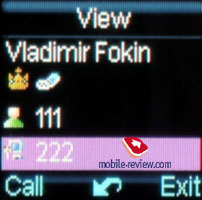 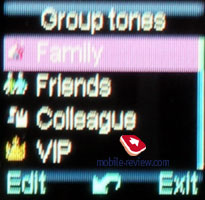
Search here can be conducted by the first letters, which is not very handy, taking account of the fact that you are unable to change language, in other words if you started typing in Russian, then you will have to go ahead without being able to switch to English. The contact list in the M600 displays entries stored in built-in memory and on the SIM-card.
There are five groups at your disposal, yet you can do only a few things to them, like setting a personal ringtone. Group filter is onboard, as well as group blacklisting. Fast dial is also enabled on the M600, allowing you to set up to 8 phone numbers.
All contacts can be saved onto a memory card or the handset’s memory in vCard (*.vcf) format, but nothing prohibits from uploading contacts utilizing the same extension onto the phone.
Messages. The handset lacks support for MMS-messaged due to being a GPRS-disabled device; EMS and long messages are also missing on the Black Pearl.
The text messages editor cannot boast any sophisticated features – in the top left corner you will see amount of symbols typed. We were slightly disappointed with caps, though – to get capital letters you have to go through a cyclic menu with the help of “#” key. To put it simply, if you started typing with caps, then turned them off and now want to get them back, you will have to scroll through the entire list. The handset offers the function of sending a message to multiple contacts.
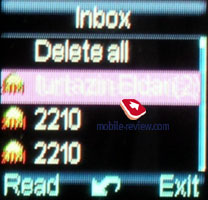 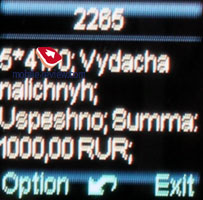
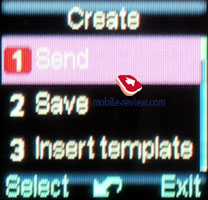 
Call record. Here you will find standard lists of incoming, outgoing and missed calls, with each being capable of holding up to 20 entries. Calls made to or came to/from the same number may be merged (having chosen a number you will see full details on latest calls involving this phone number with date and time) or not – it is up to you to decide and then choose an appropriate option in the settings. You can also check out total duration of calls, however you will be offered only information on the last call and summary.
 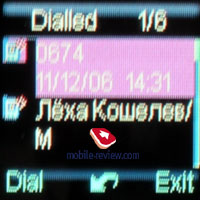
Services. Network settings are stored here, specifically divert, barring and call waiting.
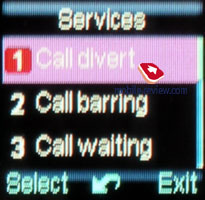
Settings. You are free to pick one out of four highlight bar colors available, wallpaper, color of input (one- or multi- color) and display brightness (7 grades), as well as backlighting timeout.
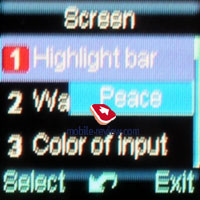 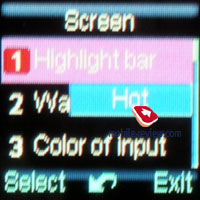
 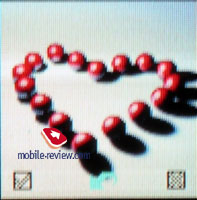
The Shortcut menu can be set up here, but as we mentioned about, only 4 items can be put on the list.
The Flight mode cuts the handset off the network; auto turning on/off allows setting exact time when the phone will either automatically switch on or off.
Profiles. The handset plays host to 6 fully user-manageable profiles, where you can pick any tune – be it MP3 or not – and set it as ringtone. The silent alert can trigger off simultaneously with the tune or separately.
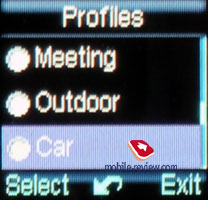 
File manager. Some kind of a file manager, but all you can do it check out amount of free memory of the phone or memory card, format memory or playback all music files.
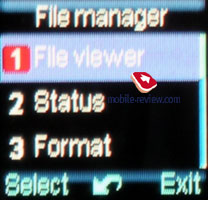 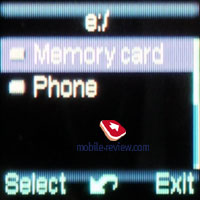

Organizer. The M600 presents you with 5 independent alarm clocks that can be set to trigger off on certain date, weekly or on workdays only. Though you can’t pick any tune you want, as the choice is limited to 5 pre-installed alerts.
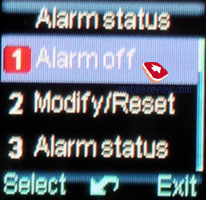 
Calendar. The calendar found in the handset offers only Month view without arming you with capabilities other than just viewing.
Memo. You can always write a few lines in a memo and set notification to go off on certain date and time. The dates stated in memos have nothing to do with the calendar, even though it is calendar, where you choose date for a notification.
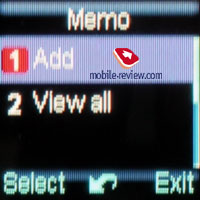 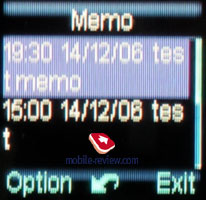
The World Time feature allows getting current time in the world’s biggest cities on a world map.
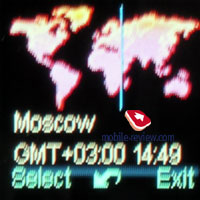
Tools. Here you will find a Voice recorder that can be activated during a call; all clips can be stored either in the handset’s memory or in the memory card, at that clip’s length is limited only to the amount of free memory available on your phone. Also you are at liberty to record a personal ringtone.
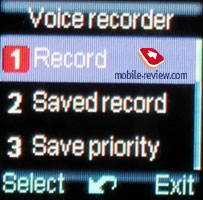 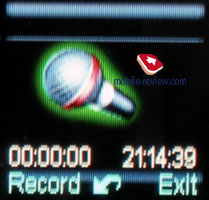
Synchronization with PC. This item requires prior activation before letting you handle memory of the handset or the memory card, on USB connection, yet you don’t have to browse through the menus to switch the corresponding option on, as once you plug in the cable you will be offered to activate connection.
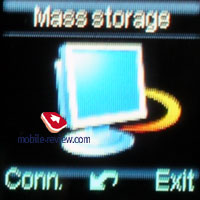
This section houses an unsophisticated calculator and a stop-watch with two intermediate values.
 
Bluetooth. The handset sports Bluetooth 2.0 connectivity with the following profiles being supported: Headset, HandFree, Object Push, Serial Port, File Transfer, A2DP and AVRCP. On the whole we have no gripes with Bluetooth performance as it does its job well.
 
Games. The M600 brings to the table two games Horo bump and Angel cube. Java support is missing in the phone, though.
 
 
Radio. The radio can be started up only on a headset/headphones plugged in. Both auto and manual tuning options are onboard, or you can just type the frequency of the desired station. The handset provides memory slots for 14 nameable stations. The radio can be minimized, which is a big plus, but if you will just quit, the application will be terminated, so instead you need to call up the menu and pick “Background play” – such implementation isn’t quite handy, for it forces you to make one extra action. Another shortcoming lies in the fact that in minimized mode the radio keeps low profile and displays only a tiny thumbnail on the screen, indicating that it is still “alive” – regrettably, Haier hasn’t made use of other manufacturers’ experience and didn’t equip its radio with the capability to display additional information like name and frequency of current station.
 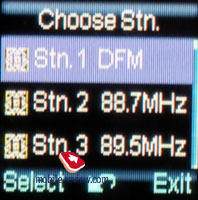
MP3-player. The M600 deals only with MP3 files (maximum bitrate - 320 Kbit/s) or AMR, at that you can playback tunes via headset or the loudspeaker. The handset offers you only a single user-manageable play-list and an option to play back all available tracks (stored in both the handset’s memory and on the memory card). During playback, using “#” key you can change playback mode, while “*” stands for switching equalizer modes: standard, rock, pop, bas and jazz. Frankly, the equalizer does make all the difference here, but regrettably the presets are few and manual tuning is disabled. On top of all that you can pick one out of four skins for the music player.
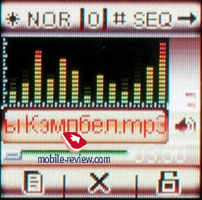 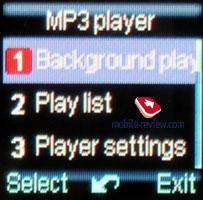
Similarly to the radio, the M600’s MP3-player can be minimized, yet in the same fashion – via the menu. Apart from that, the on-screen thumbnail letting you know that the player is on is no bigger than the radio’s one and current track’s title and duration can be found out only in the player’s window. The dedicated music keys doubling as standard numeric keys work only when at the player’s window, so that while you are in standby mode they get back to being nothing more but numeric keys without allowing you to manage player.
Impressions
The handset delivers good reception quality, the loudspeaker’s volume, as well as the microphones sensitivity prove to be enough to enable noise-free calls in almost any environments. The M600 plays host to a 64-chord polyphony showing off pretty much average sounding, but things get better if you set an MP3 track as a ringtone. Overall alerts volume is quite high, yet the quality is not cutting-edge here – it seems that such tiny casing could not possibly retain a better speaker. As for the silent alert, it is average strength-wise.
Haier M600 is the most brilliant offering in the Chinese company’s range – its developers have managed to come up with a very balanced solution boasting both a handset’s and an MP3-player’s features. Speaking about its attractions, portable size, smooth-looking design, 3.5 mm audio jack and standard miniUSB socket are among the M600’s best specs. The navigation relying on the scroll wheel brings about no problems either and adds some points to the Black Pearl’s bank, as well as fair music playback quality via headphones, which is a rare attribute for relatively cheap handsets.
However as any other handset, the M600 has some things that hold it back a little, specifically the finishing, exposed to wear and tear, various shortcomings found in the music player, support for only two music formats, flaws in the interface layout, missing possibility to switch language while searching through the phonebook and somewhat unhandy caps on/off mode. Lack of fonts scaling feature might make some consumers revise they shortlist in favor of other options. Some will definitely hate the M600 for not offering GPRS-support and consequently a WAP-browser and MMS-messaging.
But all in all Haier M600 is worth looking at, especially in light of the fact that it is nearly beyond competition. Naturally, you may object and say that Samsung X830 can rival the Black Pearl, but at the end of the day it sports other form-factor and more feature-packed interface, meaning that its retail price is much higher than that of the M600. By the way, a few words on the price, which is the very decisive thing for this very model – Haier has set the recommended price on the level of 220 USD, making the M600 a truly appealing proposal on the market and letting us believe that vendors will retail not for about 250 USD or so. The handset arrives the market approximately in the end of December, 2006 or a few days of the New Year (in 2007)
Everything we have got left to do is try to predict what Haier’s actions will be this time, since the previous failures have greatly affected the brand’s image on the market. And even though the maker has managed to present us with a “pearl” in the form ofHaier M600 (Black Pearl), it is unclear whether it will be able to get it to the consumer’s line of sight in a convenient fashion so as to boost their attitude towards the company.
P.S. Haier Black Pearl will come in Batman phone edition as well – unlike the original model, this one will boast Batman’s logo on the casing and proper pre-installed content utilizing the style of the world-wide known superhero. But to get their hands on the Batman phone, the fans will have to call at the phone-shops in Hong Kong, which is the only region where this handset will be distributed in.
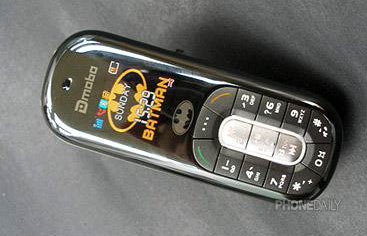

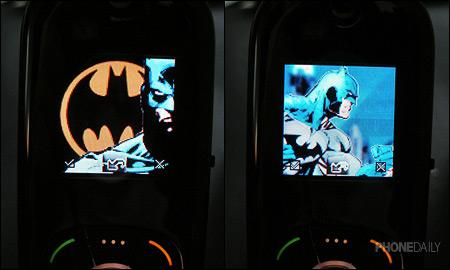
Photos Batman phone from PhoneDaily.
Vladimir Fokin ([email protected])
Translated by Oleg Kononosov ([email protected])
Published — 22 December 2006
Have something to add?! Write us... [email protected]
|
News:
[ 31-07 16:21 ]Sir Jony Ive: Apple Isn't In It For The Money
[ 31-07 13:34 ]Video: Nokia Designer Interviews
[ 31-07 13:10 ]RIM To Layoff 3,000 More Employees
[ 30-07 20:59 ]Video: iPhone 5 Housing Shown Off
[ 30-07 19:12 ]Android Fortunes Decline In U.S.
[ 25-07 16:18 ]Why Apple Is Suing Samsung?
[ 25-07 15:53 ]A Few Choice Quotes About Apple ... By Samsung
[ 23-07 20:25 ]Russian iOS Hacker Calls It A Day
[ 23-07 17:40 ]Video: It's Still Not Out, But Galaxy Note 10.1 Gets An Ad
[ 19-07 19:10 ]Another Loss For Nokia: $1 Billion Down In Q2
[ 19-07 17:22 ]British Judge Orders Apple To Run Ads Saying Samsung Did Not Copy Them
[ 19-07 16:57 ]iPhone 5 To Feature Nano-SIM Cards
[ 18-07 14:20 ]What The iPad Could Have Looked Like ...
[ 18-07 13:25 ]App Store Hack Is Still Going Strong Despite Apple's Best Efforts
[ 13-07 12:34 ]Infographic: The (Hypothetical) Sale Of RIM
[ 13-07 11:10 ]Video: iPhone Hacker Makes In-App Purchases Free
[ 12-07 19:50 ]iPhone 5 Images Leak Again
[ 12-07 17:51 ]Android Takes 50%+ Of U.S. And Europe
[ 11-07 16:02 ]Apple Involved In 60% Of Patent Suits
[ 11-07 13:14 ]Video: Kindle Fire Gets A Jelly Bean
Subscribe
|
































































